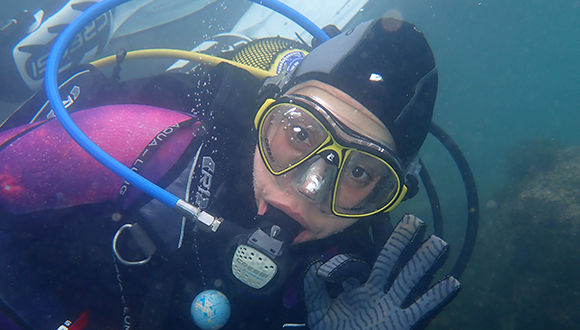BioMARató: the competition that brings the biodiversity of the Catalan coasts closer to citizens
Taking photos of the maximum number of living things on the Catalan coastline, such as birds, plants on the promenade, or underwater species, is the objective of BioMARató, one of the largest citizen science and marine observations events to be held in Catalonia between the end of April and early May, as well as throughout the summer of 2021.
The BioMARató is an activity promoted by the Institute of Marine Sciences (ICM-CSIC) together with the Cos4Cloud project, the company Anèl·lides - Serveis ambientals marins, the environmental association Xatrac, and two diving centers: Oceánicos, and Plàncton Diving and the Calonge and Sant Antoni city council, which aims to promote conservation and awareness of the marine ecosystem.
The BioMARató starts within the City Nature Challenge (CNC), an international friendly competition of naturalistic observations where cities worldwide will compete to obtain the most significant number of observations of living beings within their locality and post them on a citizen science platform. The winning region will be the one with the most naturalistic observations, the most species of living beings observed, and the most involved participants.

This year the CNC is held from April 30 to May 3, and, in the case of Catalonia, the provinces of Barcelona, Girona, and Tarragona will participate through BioMARató. Throughout these days, various free activities will be offered, including a workshop to learn about biodiversity among the rocks, snorkeling trips, and scuba dives.
From June to September 2021, citizens will enjoy multiple activities to learn about the marine ecosystem that is part of some towns on the Costa Daurada, the Costa Brava, and the beaches of the Metropolitan Area of Barcelona (AMB).
However, as the weather is not always good in April to get closer to the beaches or to enter the water, the competition will continue in the Catalan territory during the summer. Thus, from June to September 2021, citizens will enjoy multiple activities to learn about the marine ecosystem that is part of some towns on the Costa Daurada, the Costa Brava, and the beaches of the Metropolitan Area of Barcelona (AMB). In this case, the province with the highest number of observations of underwater living beings, the one that detects the most invasive and rare species, or the one with the highest number of participants, will win.
Anyone can participate, both by signing up for one of the organized activities or by photographing living beings on their own. The objective is to enjoy nature, take as many photographs of living beings and upload them to the 'BioMARató' project.

Once the BioMARató is finished, the process of identifying and validating all the observations uploaded to Natusfera will begin. Likewise, two free online activities will be organized to learn to identify species with all the observations that have been received and discover some of their curiosities.
Knowing biodiversity to promote its conservation
Some of the observations collected throughout the competition will be used in the UrbamarBio citizen science project, led by Anèl·lides - Serveis ambientals marins. The ICM-CSIC and the Cos4Cloud project participate. "We will use the data obtained from the beaches of Badalona and Barcelona to promote the sustainable use and preservation of its marine ecosystem through UrbamarBio", says Andrea Comaposada, biologist and founder of Anèl·lides - Serveis ambientals marins and leader Urbamar project.
One of the main objectives of this project is to publish a scientific article explaining the process to ensure that the data reported by citizens is of high quality, an essential requirement to be able to incorporate this type of participatory methodologies in future research projects.

The importance of citizen science is increasingly recognized as a valuable source of information for the scientific community and even to support decision-making in environmental and conservation policies..
JAUME PIERA, a researcher at ICM-CSIC, associate researcher at CREAF, and coordinator of the Cos4Cloud project.
A concrete example is the report ‘State of Nature in Catalonia 2020′ published at the end of last year by the Department of Territories and Sustainability (DTES) of the Generalitat to assess biodiversity in Catalonia. For its preparation, it counted, apart from the contribution and data of various entities, with data collected by hundreds of volunteers grouped in citizen science projects. "This document demonstrates the enormous contribution that citizen science makes to monitoring biodiversity," concludes Piera.
The report ‘State of Nature in Catalonia 2020′ by the DTES of the Catalan government to the CREAF and the Centre for Forest Science and Technology Centre of Catalonia (CTFC), which have prepared the document together with the Catalan Institute of Ornithology (ICO) and the ICM and with the collaboration of the technical services of the General Direction of Environmental Policies and Natural Environment of the own Department.







